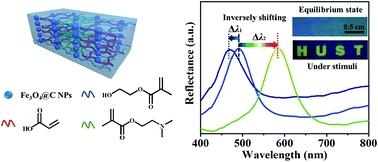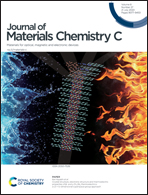Revealable photonic prints with oppositely responsive polymers for improved visual sensing†
Abstract
Invisible photonic prints are patterned photonic materials that can reveal hidden patterns under certain stimuli, which are widely used in anti-counterfeiting, identification marking, encoding, and dynamic displays. Traditionally, such photonic prints can be obtained through patterning photonic hydrogels with different responsive polymers. Yet, the visibility of the revealed prints is still not satisfactory due to the limited contrast between the responsive and non-responsive regions. In this study, we report revealable photonic prints with high visibility by patterning photonic hydrogels with two oppositely pH-responsive polymers comprising weak acidic and weak basic groups. The two distinct pH-responsive polymers can be protonated and deprotonated in the same environment, triggering the variation of colors from the initial state to the opposite directions in the different regions of the photonic prints. Therefore, the contrast of the photonic patterns is greatly improved, increasing the naked-eye detection range of colorimetric sensing. This study provides a new opportunity for designing patterned photonic materials for use in improved visual sensors.



 Please wait while we load your content...
Please wait while we load your content...